Project Structure and Approach
IDEAS–Watersheds is organized around four research activities and four shared infrastructure activities, and advances software development methodologies and engagement in the growing community-driven software ecosystem
- Research activities are pursued jointly with the multiscale watershed SFA partnerships and strive to develop process-level understanding of watershed function.
- Shared infrastructure activities provide cross cutting support for the research activities through the software ecosystem, including enhancing sustainability with the Software Stewardship activity, developing nationally consistent data sets in the Integrated Hydrologic Simulation Infrastructure (IHSI) activity, addressing land surface model integration with Integrated Hydrology in the Land Model Interface (LMI) activity, and training.
Shared Infrastructure Activities
Software Stewardship
Sustainability of the software ecosystem, which includes the overall quality and usability, requires support for software stewards to ensure
- New capabilities are integrated, tested, and included in regular releases.
- Code reviews are integrated into the development workflow.
- Regular releases of the software are made with persistent versioning (e.g., DOI)
- Documentation and tutorials are maintained and improved.
- Deployments of the entire software ecosystem that make it easier to access and use.
Integrated Hydrologic Simulation Infrastructure (IHSI)
To accelerate development and evaluation of watershed and regional models we address the need for consistent datasets and tools that can be used across watersheds for modeling water, energy fluxes and transport.
- Extensive testing at the watershed scale across diverse hydrogeologic settings.
- Building workflow tools to subset national simulations and support watershed scale simulations
Land Model Interface
The need for integrated hydro-terrestrial models that combine coupled surface/subsurface flow (Integrated Hydrology Models - IHMs) with the vegetative and ecosystem processes found in Land Surface Models (LMs) has exploded creating an array of incomplete solutions and fragmentation that is challenging for users. A key deliverable is a workshop that brings the Integrated Hydrology and Land Surface modeling communities together to chart an effective path forward.
Training, Community Building and Broader Outreach
The cohort of early career scientists jointly funded by IDEAS-Watersheds and the SFA Partnerships, as well as early career scientists involved in IHSI and LMI, participate in a variety of collaborative activities, including
- Monthly meetings on Software Development Best Practices cover topics relevant to both workflow tools and simulation codes including, version control, continuous integration and testing, parallel debugging and visualization.
- Monthly meetings on Modeling Case Studies raise awareness of the challenges and approaches to process-based modeling, sharing our experiences and stimulating new collaborations on synergistic topics across the project.
- Short courses for the primary codes are increasingly available online and are expanding to include more material on workflows and coupled simulations, such as ATS-PFLOTRAN.
- IDEAS-Watersheds supports a wide range of activities, including a leadership role in the ESS Cyberinfrastructure Working groups, community benchmarking and model-intercomparison studies, and interagency collaboration.
